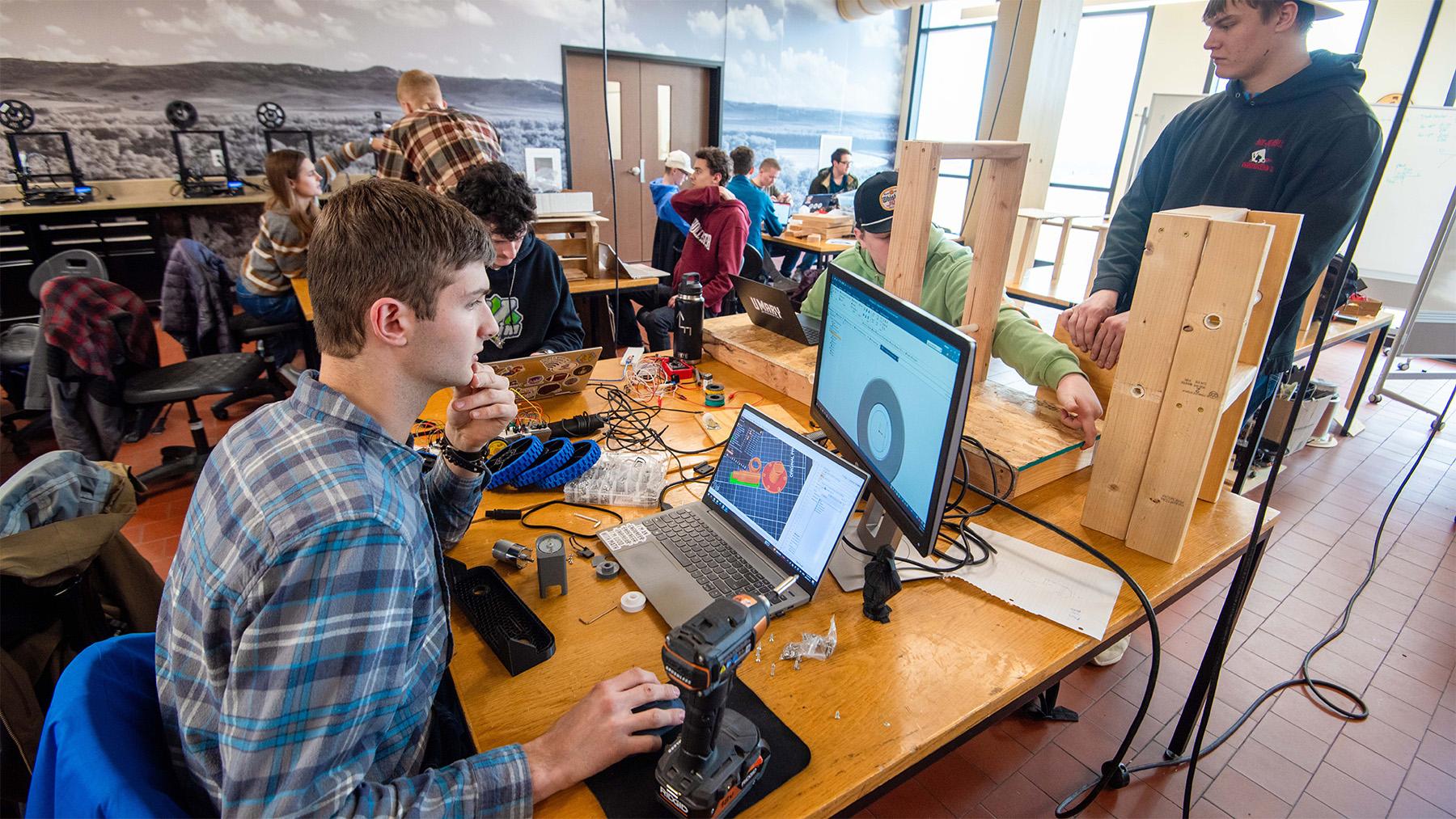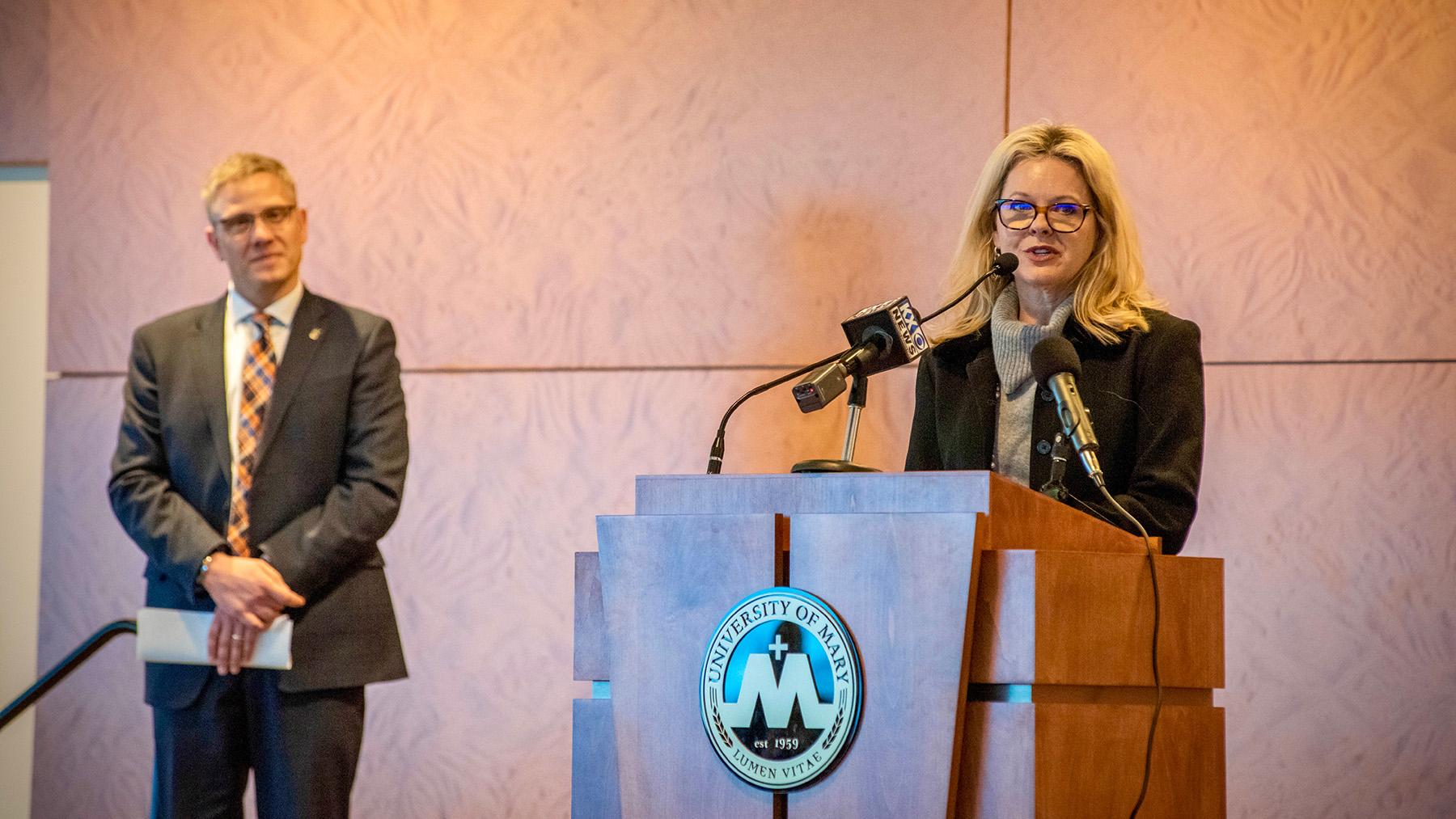Are the Engineering programs accredited?
Yes, you can view the engineering program pages for additional accreditation information.
What facilities and lab spaces are used in the School of Engineering?
The Hamm School of Engineering building was built in Summer 2020. This new facility features a machine shop, student design center, design fundamentals lab, and multiple lab spaces dedicated to each major.
Are internship opportunities available to students?
The Hamm School of Engineering has relationships with over 50 companies, agencies, and organizations with branches in Bismarck. Most of these companies have multiple paid internship opportunities available to students on a yearly basis. Faculty encourage students to pursue internships during the summer or part-time work during the fall or spring semesters.
Can I get an internship as an out-of-state student?
Many of the companies offering internships have multiple offices across North Dakota, the region, and the country. Students who’d like to work in Bismarck during the summer semester can live in residence halls on campus. Students who prefer to live at home during the summer can work with faculty to explore internship opportunities closer to home.
Is it possible to study abroad with the engineering curriculum?
A semester studying abroad is feasible with any engineering curriculum. We recommend you meet with your academic advisor to create an individualized plan of study for a semester abroad.
Is a double major or a minor degree feasible with the engineering curriculum?
Many students pursue minors or a double major in areas such as mathematics, music, business, and Catholic studies. This may not be recommended for all students; however, it is possible if a student is willing to add time to their degree plans or enroll in the summer semester. If you are planning to pursue multiple degrees, we encourage you to meet with your faculty advisor to plan your coursework.
Can I be a scholar-athlete and still complete a degree in engineering?
Yes, it is possible for scholar-athletes to study engineering. Football, softball, baseball, soccer, track, cross country, wrestling, and basketball athletes have studied in the Hamm School of Engineering. Some scholar-athletes choose to complete the program with a five-year plan to better accommodate practice and game schedules. If you are a scholar-athlete, we recommend that you meet with your academic advisor each semester to ensure progress towards degree completion.
What are typical class sizes?
With the exception of introductory-level courses, class sizes are capped at 20-25 students for engineering courses.
Does the curriculum feature labs/hands-on/design work?
Faculty include many real-word and hands-on applications in their coursework. Classes are taught in a laboratory setting, which allows free transfer between the fundamental theory and practical application. Students learn through a combination of lab work, design projects, and use of real-world data, such as case studies.
What if I do not know what area or major of engineering I want to pursue?
Our engineering programs are uniquely designed so that you don’t need to know what type of engineering degree to pursue prior to freshman year. All first year engineering students take the same courses, giving students time to learn the differences between the different types of engineering, while making progress towards an engineering degree. Throughout the curriculum, students take courses and complete design projects alongside students pursuing different engineering degrees. This gives students experience working on interdisciplinary projects with people with other areas of expertise, just as they will in the workforce.
What makes the University of Mary School of Engineering different from other engineering programs?
The Hamm School of Engineering prepares engineers for the workplace. Graduates are professionally competent, and also have moral and ethical integrity. Students learn to integrate these qualities within themselves through a combination of our engineering curriculum, liberal arts core curriculum, internships, student life, and extracurricular activities.







